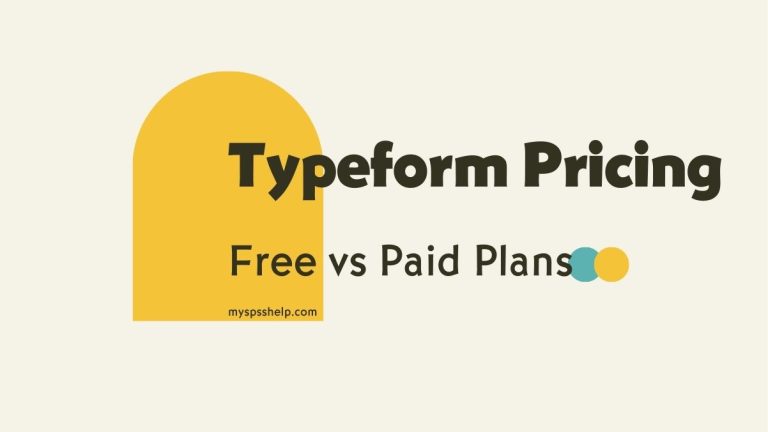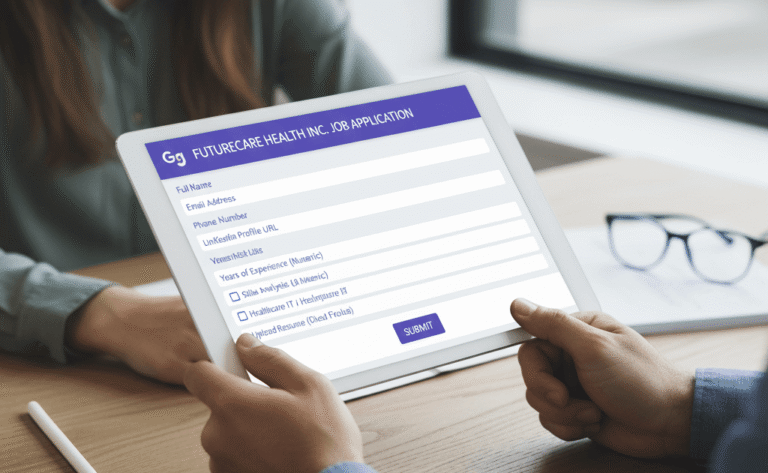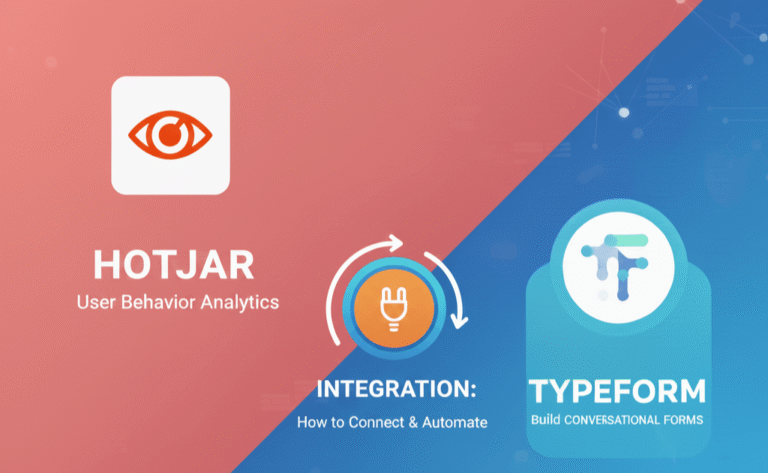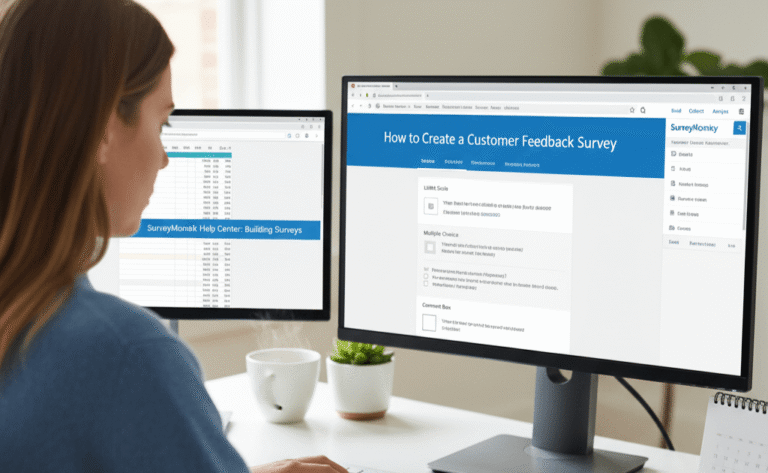Typeform Survey Guide for Researchers and Businesses
Capturing genuine responses from your audience starts with how your questions are delivered. Typeform stands out for its unique approach to survey design prioritizing user experience with conversational, one-question-at-a-time interactions that feel more like a chat than a traditional form. With its visually engaging format and smart logic capabilities, Typeform helps you create surveys that not only look great but also get completed. In this comprehensive guide, we’ll show you how to build and launch effective Typeform surveys for academic research, startups, customer feedback, and more. You can also explore Typeform’s official Help Center for platform-specific tutorials and updates. With its visually engaging format and smart logic capabilities, Typeform helps you create surveys that not only look great but also get completed. In this comprehensive guide, we’ll show you how to build and launch effective Typeform surveys for academic research, startups, customer feedback, and more. We will show you how to build and launch effective Typeform surveys for academic research, startups, customer feedback, and more. Whether you’re a beginner or an advanced user, this blog will equip you with everything you need to know.
What Is Typeform?
Typeform is an online survey tool that emphasizes user experience. It transforms traditional forms into dynamic, visually appealing interactions. Instead of static pages, users navigate through one question at a time, resulting in better completion rates and more thoughtful responses. Typeform is ideal for researchers, small businesses, educators, product teams, and marketers.
How to Use Typeform for Survey Design
Creating a Typeform survey is intuitive. After signing up at Typeform, you can start from scratch or use a pre-designed template. Typeform lets you add various question types such as short text, multiple choice, opinion scales, and file uploads. Logic jumps make it possible to personalize the respondent’s experience, dynamically altering the flow based on their answers. You can further customize the design with brand elements and even embed videos or images. Once done, preview and share your survey via link, embed code, or social media. Typeform integrates seamlessly with tools like Google Sheets, Slack, Notion, Mailchimp, and Zapier to help automate your workflow.
Key Features of Typeform
Typeform is distinguished by its conversational, one-question-at-a-time interface. This helps respondents stay focused and leads to higher completion rates. Advanced logic jumps enable conditional branching, allowing for highly personalized forms. With a wide variety of customizable templates and a clean, modern design, Typeform surveys are also easy to brand. Multimedia elements such as video backgrounds and icons enhance engagement, while integrations with Google Sheets, Airtable, and CRMs support powerful automation. Typeform’s analytics dashboard provides insights into completion rates, average time per response, and drop-off points.
Who Should Use Typeform?
Typeform is especially valuable to businesses looking to capture clean, structured data through an elegant interface. Startups often use it for product feedback, while educators and academic researchers favor it for its ease of use and modern UX. Human resources teams can build branded recruitment or onboarding forms, and marketers use it for lead generation and segmentation. Whether you’re collecting survey data for a dissertation, feedback from early adopters, or internal employee sentiment, Typeform offers flexible and effective solutions.
Pros and Cons of Using Typeform
One of Typeform’s biggest advantages is its visual appeal and user-centric design. It’s easy to use, with no technical background required. Surveys look great across devices and often outperform traditional forms in engagement. However, analytics are somewhat limited compared to research-heavy tools like Qualtrics, and some advanced logic options are only available in paid plans. For longer surveys, the one-question-at-a-time approach might feel tedious to respondents.
Comparing Typeform with Other Tools
Here’s a comparison table showing how Typeform stacks up against other survey platforms like SurveyMonkey and Qualtrics:
| Feature | Typeform | SurveyMonkey | Qualtrics |
|---|---|---|---|
| User Interface | Conversational, modern | Traditional form-style | Enterprise-level complexity |
| Ease of Use | Very user-friendly | User-friendly | Moderate to difficult |
| Customization | High (design and layout) | Medium | High (functionality) |
| Logic and Branching | Available (paid tiers) | Available | Advanced |
| Integrations | Zapier, Slack, Google Sheets | Salesforce, Mailchimp | CRMs, BI tools, Salesforce |
| Analytics | Basic to Intermediate | Intermediate | Advanced |
| Best for | UX surveys, startups, SMEs | General-purpose surveys | Academic, enterprise, research |
Each of these tools has strengths that suit different use cases. If you’re looking for aesthetic appeal and ease of use, Typeform is a great choice. For more powerful data analysis, SurveyMonkey or Qualtrics may be a better fit depending on your project.
Real-World Use Cases
Imagine a startup launching a new product. They embed a Typeform survey on their website to gather UX feedback and route leads to their CRM via Zapier. A PhD student conducting qualitative research uses logic jumps and long-answer fields for in-depth responses. A nonprofit leverages Typeform to collect post-event feedback, complete with branding and images to reinforce their mission.
Integrations That Make Typeform Powerful
Typeform’s ecosystem supports robust integrations that extend its functionality. Link it to Google Sheets for live response tracking, Mailchimp for automated follow-up campaigns, or Airtable to manage project workflows. For those who rely on automation, Zapier opens up connections to thousands of other tools. Marketers can score leads and segment audiences, while researchers can organize responses directly into Notion or Trello boards for collaboration.
Tips for Creating Effective Typeform Surveys
To create a successful Typeform survey, keep your questions clear and concise. Use logic jumps thoughtfully to avoid unnecessary repetition. Include progress indicators so respondents know how much is left. Maintain visual consistency with your brand elements, and test your form across devices. Avoid making your survey too long — the one-question format, while engaging, can feel drawn out over many questions.
Helpful Links
Here are a few resources to help you explore Typeform and survey design more deeply:
-
Contact My Survey Help for tailored survey support
Final Thoughts
Typeform is an excellent survey platform for anyone looking to collect data through an attractive, intuitive interface. Its emphasis on design and UX makes it especially appealing for startups, researchers, and marketers aiming to increase response rates. While it may not offer the deep analytics of platforms like SPSS or Qualtrics, it excels in engagement and simplicity.
Need help creating your next Typeform survey? Contact us at My Survey Help — your global partner for survey design, from SurveyMonkey to Qualtrics, and more.
Still unsure if Typeform fits your project needs? Reach out to us for expert guidance and done-for-you survey setup services.








4 Comments
Comments are closed.